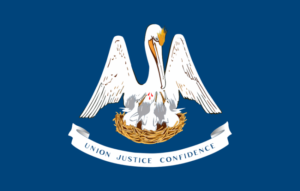Things and Ownership – Immovables and movables
Art. 462. Tracts of land. Tracts of land, with their component parts, are immovables.
Art. 463. Component parts of tracts of land. Buildings, other constructions permanently attached to the ground, standing timber, and unharvested crops or ungathered fruits of trees, are component parts of a tract of land when they belong to the owner of the ground.
Art 464. Buildings and standing timber as separate immovables. Buildings and standing timber are separate immovables when they belong to a person other than the owner of the ground.
Art. 465. Things incorporated into an immovable. Things incorporated into a tract of land, a building, or other construction, so as to become an integral part of it, such as building materials, are its component parts.
Art. 466. Component parts of buildings or other constructions. Things that are attached to a building and that, according to prevailing usages, serve to complete a building of the same general type, without regard to its specific use, are its component parts. Component parts of this kind may include doors, shutters, gutters, and cabinetry, as well as plumbing, heating, cooling, electrical, and similar systems. Things that are attached to a construction other than a building and that serve its principal use are its component parts. Other things are component parts of a building or other construction if they are attached to such a degree that they cannot be removed without substantial damage to themselves or to the building or other construction.
Art. 470. Incorporeal immovables. Rights and actions that apply to immovable things are incorporeal immovables. Immovables of this kind are such as personal servitudes established on immovables, predial servitudes, mineral rights, and petitory or possessory actions.
Art. 467. Immovables by declaration. The owner of an immovable may declare that machinery, appliances, and equipment owned by him and placed on the immovable, other than his private residence, for its service and improvement are deemed to be its component parts. The declaration shall be filed for registry in the conveyance records of the parish in which the immovable is located.
Art. 468. Deimmobilization. Component parts of an immovable so damaged or deteriorated that they can no longer serve the use of lands or buildings are deimmobilized. The owner may deimmobilize the component parts of an immovable by an act translative of ownership and delivery to acquirers in good faith. In the absence of rights of third persons, the owner may deimmobilize things by detachment or removal.
Art. 471. Corporeal movables. Corporeal movables are things, whether animate or inanimate, that normally move or can be moved from one place to another.
Art. 473. Incorporeal movables. Rights, obligations, and actions that apply to a movable thing are incorporeal movables. Movables of this kind are such as bonds, annuities, and interests or shares in entities possessing juridical personality. Interests or shares in a juridical person that owns immovables are considered as movables as long as the entity exists; upon its dissolution, the right of each individual to a share in the immovables is an immovable.
Art. 475. Things not immovable. All things, corporeal or incorporeal, that the law does not consider as immovables, are movables.

Leave a Reply
You must be logged in to post a comment.